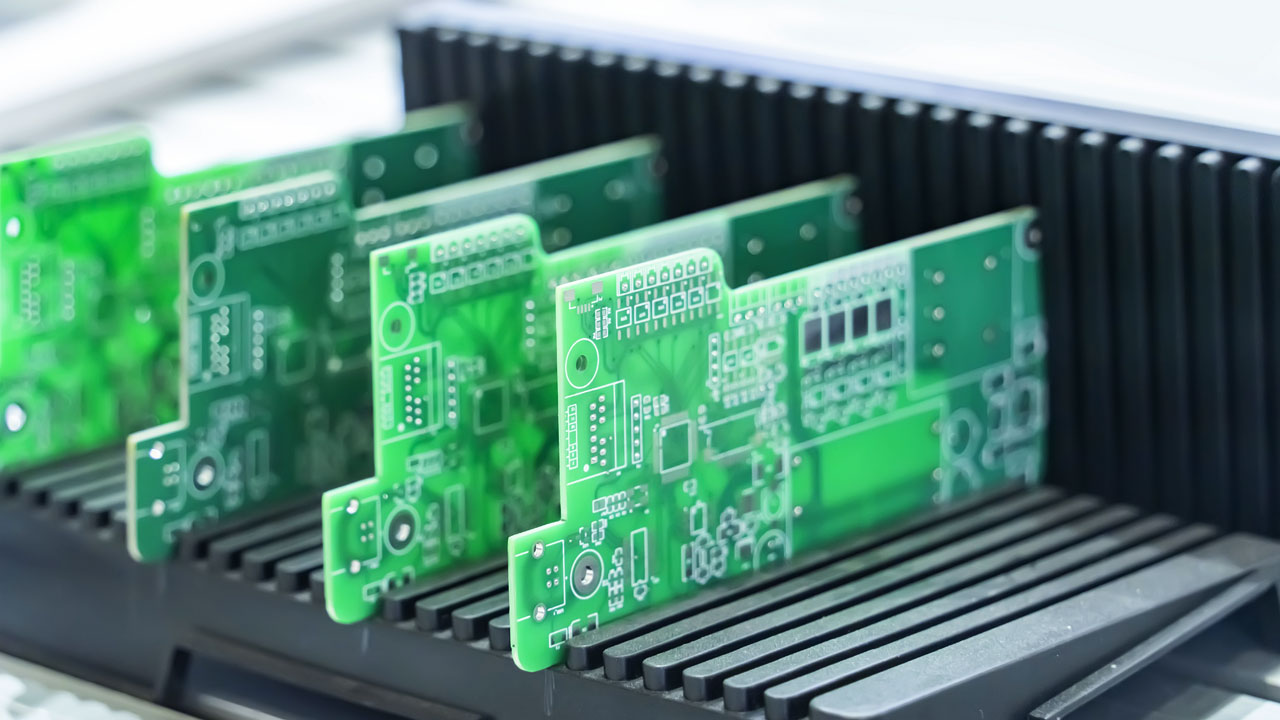
Medical & Life Sciences
Electronics for diagnostics, monitoring, imaging, and lab instruments—built under ISO 13485-certified systems with full documentation, traceability, and consistency from prototype to production.
Every medical instrument tells a story long before it reaches a patient’s hands. The precision of its sensors, the reliability of its circuits, and the traceability of its components all decide how confidently it can be used in a clinic, lab, or home environment. That’s where Foxtronics EMS fits in — at the intersection of engineering discipline and regulatory assurance.
We build electronics for a wide range of medical and life-science applications: diagnostic analyzers that process thousands of samples per day, wearable monitors that must perform flawlessly around the clock, imaging subsystems that manage thermal balance and signal integrity, and compact modules for point-of-care and lab automation equipment. Each demands consistent output, clean assembly, and documentation that stands up to scrutiny.
Our manufacturing systems operate under ISO 13485 certification and follow the principles of FDA 21 CFR 820. Device history records, traveler documentation, and controlled storage of test data are standard practice, not extras. From prototype through production, every revision is logged, reviewed, and approved so that validations and audits move forward smoothly.
What makes this process work isn’t just compliance — it’s collaboration. Our engineers work side by side with customer design and quality teams to resolve manufacturability questions early, verify component suitability, and anticipate supply-chain or obsolescence risks before they disrupt builds. The result is a workflow that’s efficient, transparent, and ready for inspection at any point in the product lifecycle.
Behind each assembly is a disciplined, well-documented process designed to protect the two things that matter most in healthcare manufacturing: patient safety and your brand’s reputation for reliability.

In medical electronics, reliability isn’t a statistic — it’s a responsibility. When a circuit fails in a consumer product, it might cause inconvenience. When it fails in a medical device, it can interrupt care, delay diagnosis, or compromise patient safety. That’s why manufacturing discipline and documentation are every bit as important as design innovation.
Every build at Foxtronics EMS follows a process engineered around repeatability. Our technicians and engineers work in controlled assembly environments designed for contamination-sensitive builds, following ESD-safe protocols and cleaning validation standards. Each operator is trained to IPC Class 3 workmanship, and every assembly undergoes documented inspection checkpoints to meet ISO 13485 and FDA 21 CFR 820 requirements.
But beyond meeting standards, the goal is to make compliance effortless for our customers. OEMs often face complex validation cycles and documentation audits — we build with those in mind. Serialization, traveler sheets, traceable components, and logged inspection data all integrate into a transparent record trail. It simplifies regulatory submissions, smooths CAPA investigations, and supports audit readiness at any stage.
What truly matters, though, is partnership. Our manufacturing teams aren’t simply executing builds — they’re part of your product’s risk management system. Whether advising on design tweaks that improve manufacturability, recommending alternate components for supply assurance, or creating test coverage plans that reduce field returns, Foxtronics EMS helps you prevent issues before they appear.
By combining disciplined process control with proactive engineering, we ensure every board, harness, and finished assembly that leaves our facility reflects the integrity your devices promise to deliver.
Medical and life-science OEMs trust Foxtronics EMS for assemblies that do more than meet specifications — they maintain performance and documentation integrity over long product lifecycles. Our facilities combine engineering collaboration, process validation, and component control to ensure every build remains compliant, consistent, and reliable from prototype through production.

Every assembly produced under our ISO 13485-certified quality management system is built, inspected, and documented to meet global regulatory expectations.
We specialize in high-mix SMT and through-hole assemblies for diagnostic instruments, imaging subsystems, patient monitoring equipment, and wearable or point-of-care devices. Each build moves through clean, controlled environments where ESD protection, solder joint integrity, and component traceability are monitored continuously. We perform AOI, X-ray, and in-circuit testing on every production lot to verify consistency across batches. For devices requiring enhanced cleanliness, optional post-solder cleaning and ionic contamination testing are available to meet medical-grade standards.
Every process step is mapped within our ISO 13485-certified quality management system — from risk analysis and documentation control to supplier qualification and device history record maintenance. Our quality and engineering teams work together to ensure that each build aligns with customer-specific regulatory frameworks, including FDA 21 CFR 820, CE marking, and MDR compliance. We treat documentation as a product of its own — accurate, reviewable, and always audit-ready.
We provide full product and subsystem integration, including cable harnessing, enclosure assembly, labeling, and verification testing. Assemblies are functionally tested and visually inspected to ensure enclosure sealing, grounding, and alignment compliance. For devices headed into clinical or diagnostic use, we handle final configuration, software or firmware loading, and functional validation per your qualification protocol. Every unit is packaged with serialized labeling and complete documentation, ready for field delivery or sterilization.
Performance validation is an integral part of our process — not an afterthought. We provide functional, in-circuit, and burn-in testing with data logging that feeds directly into our traceability systems. Environmental testing capabilities include temperature, humidity, and vibration profiles that replicate operational conditions. Golden unit verification and test fixture development are handled in collaboration with customer engineering teams to ensure repeatable, defensible results.
Traceability is more than a database entry; it’s a closed-loop system. Every component is logged from receipt to final shipment, and every test result is tied to a unique serial identifier. We maintain digital traveler records that include inspection results, rework history, and process signatures. This end-to-end visibility supports faster investigations, easier regulatory reporting, and higher confidence in every unit that leaves our facility.

Choosing a manufacturing partner in the medical sector isn’t just about who can assemble a circuit — it’s about who understands what’s at stake when that circuit becomes part of a life-critical device. Every step of our process is built on that understanding.
Foxtronics EMS brings together deep manufacturing experience and the discipline required by ISO 13485, IPC Class 3, and FDA-aligned standards. But more importantly, we bridge the gap between design intent and regulatory execution. Our teams understand how to translate engineering drawings into stable, validated builds that hold up to audits, reliability testing, and long-term service demands.
We take pride in being a proactive partner — identifying manufacturability risks early, supporting documentation for verification and validation, and streamlining change control for engineering revisions. Each customer program has a dedicated engineering interface to maintain transparency and fast communication across design, production, and QA teams.
With controlled environments, serialized traceability, and robust quality documentation, we give OEMs the confidence to move faster without sacrificing compliance. The outcome: fewer interruptions, smoother validations, and a supply chain you can count on for years.
In an industry where reliability is measured in lives improved or saved, our role is simple — to make sure the electronics inside every medical device perform exactly as intended, every time.
We uphold strict quality, safety, and compliance standards backed by advanced inspections, thorough testing, and globally recognized certifications to ensure product reliability and performance.
Every product undergoes rigorous in-line inspections, functional testing, and quality control processes at every stage of production to guarantee consistency and precision.
Foxtronics EMS maintains internationally recognized certifications that reflect our dedication to quality management and regulatory compliance across multiple industries:
With decades of experience and industry certifications, Foxtronics EMS supports leading innovators in demanding sectors, delivering reliable PCB assembly for mission-critical products. Our certified quality systems, advanced manufacturing, and engineering expertise ensure we meet the unique technical requirements of every industry we serve.
Foxtronics EMS combines precision, reliability, and scalability to deliver high-performance PCB assembly solutions. With decades of experience, advanced facilities, and engineering expertise, we add value across every stage of your product’s lifecycle.
With over 116 years of combined experience, Foxtronics EMS serves industries such as aerospace, medical, industrial, and automotive. Our AS9100, ISO, and ITAR certifications ensure compliance with the highest quality and regulatory standards, allowing us to meet the demands of mission-critical applications.
From initial design to final delivery, we offer complete lifecycle support. Our in-house engineering team provides DFM and early design consultation to optimize manufacturability, reduce risk, and accelerate time-to-market—ensuring a smooth transition from concept to scalable production.
Foxtronics EMS provides fully managed turnkey solutions, including component sourcing, SMT and through-hole assembly, box builds, and testing. This approach simplifies supply chains, reduces vendor dependency, and ensures consistent quality at every stage.
Our state-of-the-art facilities are designed to handle complex PCB assemblies with exceptional precision and reliability. Automated systems, high-speed SMT lines, and rigorous process controls ensure consistent quality and scalability, supporting the most intricate and demanding production requirements.
Quality assurance is built into every step of our process. We utilize AOI, X-ray inspection, in-circuit, and functional testing to detect defects early and ensure long-term reliability. Our inspection protocols align with IPC and AS9100 industry standards.
With flexible production and streamlined workflows, we offer rapid prototyping and efficient scaling for diverse production needs. Whether for low-volume prototypes or high-volume runs, our responsive team ensures fast, reliable delivery without sacrificing quality.
Our facilities are purpose-built for precision and flexibility, supporting everything from quick-turn prototypes to high-volume PCBA production. With dedicated areas for assembly, inspection, and testing, every process runs under controlled workflows to ensure consistent quality at scale.
Aftermarket services ensure electronic products remain reliable and cost-effective throughout their lifecycle. These FAQs cover key topics like PCB assembly repair, warranty support, and refurbishment to help you understand how our solutions add long-term value.
We support a broad range of programs across diagnostic, therapeutic, and life-science applications — from analyzers and imaging modules to patient monitoring devices, wearable health platforms, and lab automation assemblies. Our experience spans both electromechanical systems and sensor-based PCBs requiring high precision and clean handling.
Yes. Our manufacturing sites operate under ISO 13485 certification and follow FDA 21 CFR 820-aligned quality systems. That means documented risk management, controlled process validation, and device history records that withstand regulatory audits.
Every assembly is serialized and digitally tracked from component receipt through final shipment. Process parameters, inspection data, and test results are automatically logged, allowing complete traceability and fast retrieval during audits or CAPA reviews.
Absolutely. We run NPI and quick-turn prototype builds within the same controlled environment as production. Early engagement lets our engineers validate layout, materials, and test coverage so you can enter verification and validation phases with confidence.
Functional and in-circuit testing, boundary-scan, and burn-in are standard options. We also perform temperature, humidity, and vibration testing that replicate field and clinical environments, with data logging integrated into the device’s documentation record.
While we don’t act as a regulatory consultant, our documentation and process transparency make audit preparation far easier. We routinely support customer teams during ISO, CE, and FDA audits with production records, traceability reports, and process validations.
